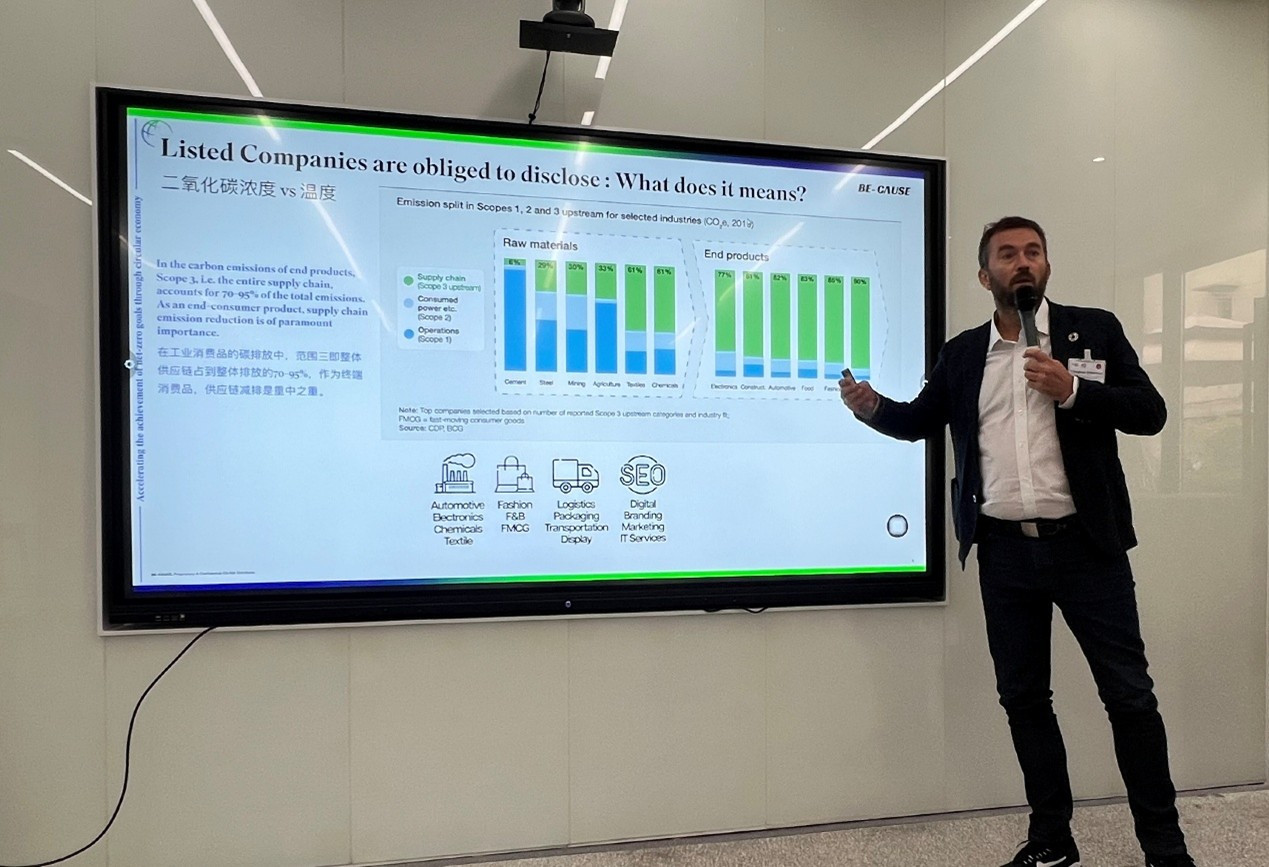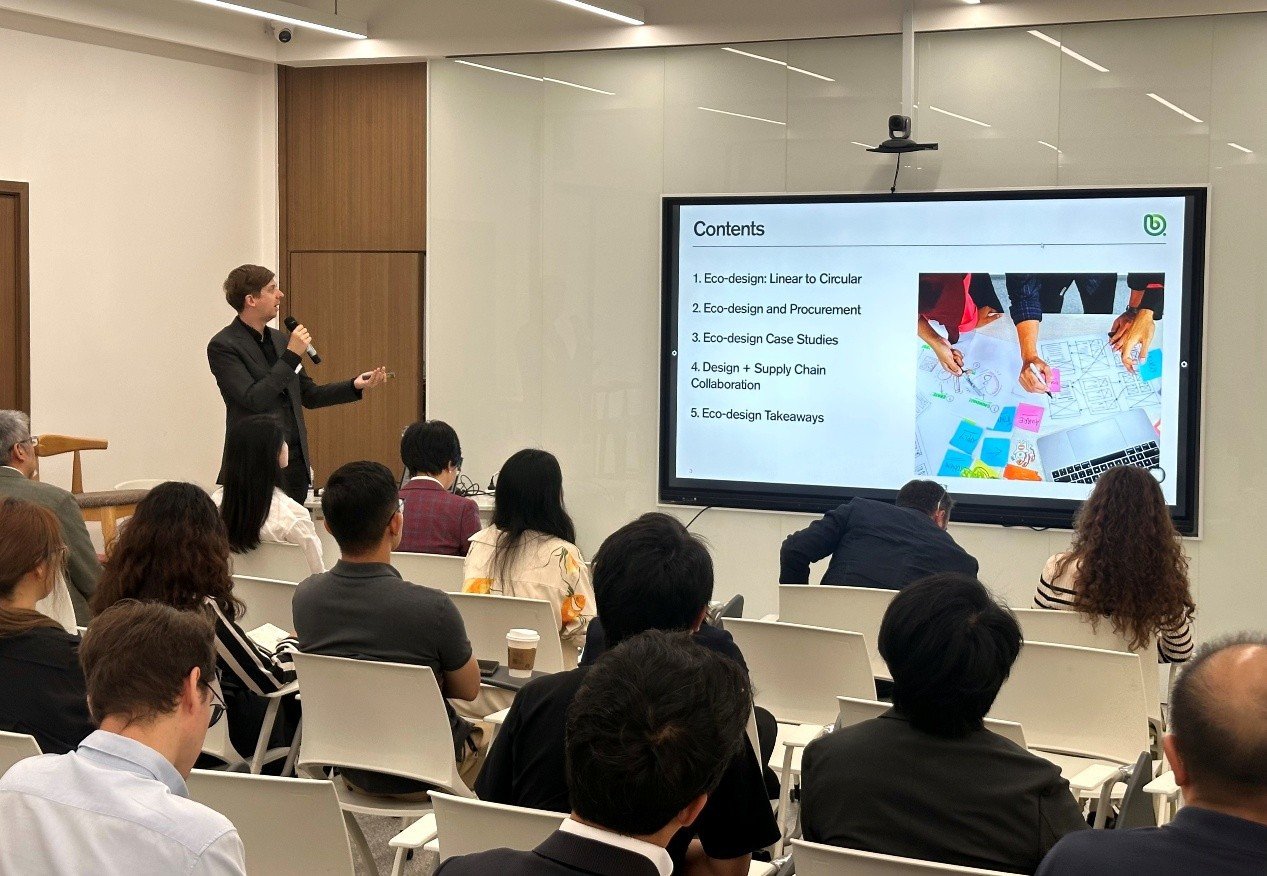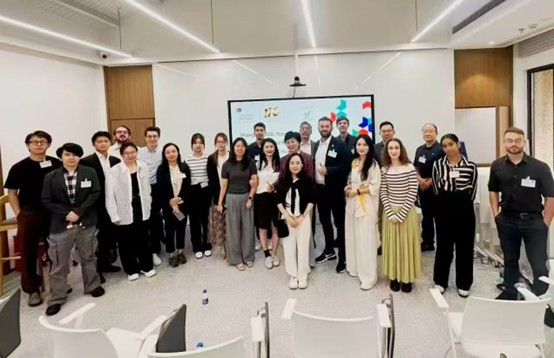On the morning of 16 October, the BritCham Shanghai ESG Committee hosted the “Shanghai 2030: Transforming Supply Chains for Radical Sustainability & Circular Innovation” event at the Shanghai Hengfu Economic Development Company office.

The forum delivered a powerful consensus: global supply chain transformation is not a distant ideal but an immediate, data-driven, and legally mandated reality. Featuring keynote presentations from legal, digital, environmental, and design experts, the event charted a clear course for building resilient, low-carbon supply chains, with Shanghai’s 2030 Action Plan serving as a critical regional catalyst.
The overarching message was unequivocal: sustainability has evolved from a corporate social responsibility initiative into a core strategic imperative—driven by policy, enabled by digital tools, and realised through circular design.
The Legal Imperative and Policy Framework
Setting the stage, Nancy Sun, Senior Partner at Dacheng Law Offices laid out the hard truths of non-compliance. She emphasised that failing to adopt sustainable practices now carries tangible legal risks, including fines and litigation under China’s evolving carbon trading laws. She detailed how Shanghai’s 2030 Action Plan provides a clear roadmap, establishing carbon footprint management systems, expanding carbon labelling, and leveraging leading enterprises to pilot new models.
“The strategy aims to foster regional collaboration in the Yangtze River Delta,” Nancy noted, “to create a market-driven, sustainable supply chain from the top down.”

The Data Foundation: Solving the Carbon Accounting Crisis
A critical barrier to this transformation was addressed by Joye Zhou, Marketing Director at E-Carbon Digital. Joye highlighted the growing pressure from regulations like the EU’s CBAM and corporate net-zero goals, which demand accurate quantification of carbon emissions. However, she pointed to a fundamental “data crisis,” where international Life Cycle Assessment (LCA) databases are ill-suited for China’s specific industrial context.
“Inaccurate and outdated data leads to major calculation distortions,” Joye stated. Her solution, the locally-engineered HiQLCD database suite, was presented as an essential tool to provide the granular, accurate data needed for compliance and strategic decision-making, finally enabling companies to break the “Scope 3 ice.”

The Strategic Blueprint: Collaboration and Circularity
Emmanuel Delplanque, Co-Founder & CEO of Be-Cause, framed the challenge as both a risk and an immense opportunity. He stressed that with 70-95% of a product’s footprint embedded in the supply chain (Scope 3 emissions), transformation is paramount.
Emmanuel outlined a three-pillar strategy for resilience:
“This transition is about seizing tangible opportunities to reduce operating expenses, improve competitiveness, and strengthen stakeholder relationships,” Emmanuel concluded.

The Design Lever: Turning Sustainability into Advantage
Tim Binnion, Founder of (better)labs, made a compelling case for eco-design as the ultimate competitive differentiator. He argued that 80% of a product’s environmental impact is locked in during the design phase, making it the most powerful point of intervention.
“Eco-design transforms sustainability from a cost into a competitive advantage,” Tim said. Through case studies like a reusable exhibition system that cut carbon by 89%, he demonstrated how designing to narrow, close, and extend material loops requires deep supplier collaboration and fundamentally reshapes value chains.

Panel Insights: Navigating the Practical Challenges
A subsequent panel delved into the hurdles of implementation, identifying key themes:

Conclusion: An Unavoidable Journey
The “Shanghai 2030” event painted a clear picture: the transformation is a complex but unavoidable journey. Success will depend on a tight feedback loop between evolving government policy, the adoption of precise digital tools, and a fundamental redesign of products and business models for a circular future. While challenges around cost and competition persist, the direction set by regulations makes it clear that radical sustainability is the new baseline for business resilience and growth.
